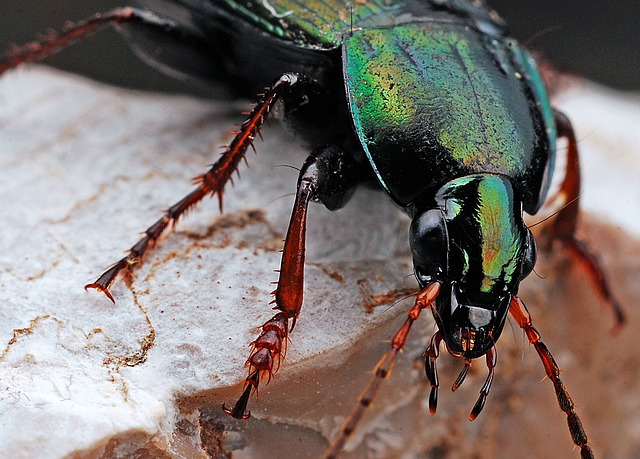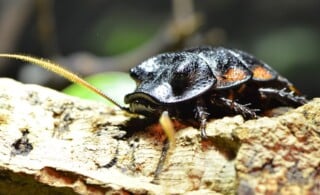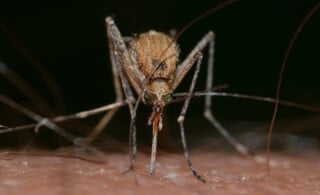
The joy of swooping a net over an Eastern Black Swallowtail butterfly or digging through riverbeds to entrap a tiger beetle might elude the comprehension of most people, but not amateur entomologists. They recognize the preciousness of being close to nature and the insects so many people carelessly loathe and dismiss as pests. Amateur entomology is the informal study of bugs by someone who is not a professional entomologist. It can be considered a hobby, although some diehard amateurs take offense at that term. Amateur entomology is about more than gazing at beautiful bugs; it involves the science of collecting, storing in a viable habitat, feeding, studying the life cycle from larvae to adult specimen, as well as looking at the impact of an insect on the environment–and vice versa.
Getting started as an amateur entomologist might seem overwhelming, but professional societies and clubs, like the American Entomological Society (AES), exist to provide online direction, conferences, newsletters and ways to network with fellow amateurs. While amateurs may amass hundreds of pieces of equipment over time, you can start enjoying entomology with just five basic items. You’ll need first and foremost an insect guide that will help you identify any bugs you find. In addition, you’ll need a net to catch insects, a couple of collecting jars, some insect pins, and a display case.
Some people opt to buy insect traps in addition to nets. Cages are optional. All these items can be purchased through special entomological suppliers. Find them online through links below or contact the horticultural department at your local university for guidance. The AES can also direct you to trusted suppliers who will not only ship equipment, but also insect specimens.
Since some insects can bite and contain dangerous venom, precaution is necessary when becoming an amateur entomologist. Study insects to know if you are collecting poisonous or innocuous bugs. Be careful not to introduce new species into an environment where they can cause harm to trees and indigenous plants. Do not hurt insects buy storing them in an environment not suited for them. Attend a few conferences through AES, colleges, or bug clubs to enlighten yourself about how to avoid any dangers and make the most of your avocation.
Beyond offering hours of fun and intrigue, being an amateur entomologist can be vastly educational. The hobby can be a window into understanding biology (the metamorphosis of bugs, taxonomy of collected specimens, habitat of insects), horticulture (what flowers to plant to cultivate a butterfly garden; alongside what plant species can certain beetles be found), chemistry (the impact of environmental toxins on insects), and physics (constructing cages and traps for collection).
- Terminology: This glossary defines basic terms used in the study of insects.
- Glossary of Terms: This site offers an online dictionary of entomological words.
- Compendium: This site offers taxonomy information on a variety of insects. A glossary of orders and classes are given.
- List of Materials: This site details the equipment needed for collecting insects and explains the purpose of each item.
- Equipment Suppliers: This site lists addresses and phone numbers of companies that supply entomological equipment ranging from books to microscopes to software. Most suppliers on the list cater to hobbyists as well as professionals.
- Bug Dorm Store: This online store supplies containers in which to house insects. Traps are also available.
- John Hock Company: This company supplies equipment specifically for catching mosquitoes.
- Buying Butterflies: This store sells moths, buttery, silkworms, and larvae for insect enthusiasts.
- The Center for Invasive Species: This site offers a catalog of insect images. Includes taxonomy.
- Amateur Entomologists’ Society: Based in the UK, this AES website offers insect facts and news. There is also a “Bug Club.”
- The American Entomological Society: This organization welcomes both amateurs and professionals, offering field trips and a wide range of publications on insects.
- FAQs: This Entomological Society of America offers a guide of frequently asked questions to assist novice entomologists.
- Entomological Foundation: This guide to resources for amateur entomologists links to interactive learning tools, clubs, and contests.
- Research Science: The Department of Plant, Social and Entomological Sciences at the University of Idaho lists a range of scientific research projects covering topics ranging from mosquito reproduction to controlling pests.
- Scientific Areas of Study: This Purdue website suggests that entomological science has five general areas of focus: research, teaching, environmental efforts, medicine, and public health.
- Center for Insect Science: The Arizona University Research Lab offers information on insect science and projects.
- How to Guide: This Bohart Museum website offers a guide on how to collect bugs.
- Guide to Constructing a Garden: This University of Kentucky website details on how to make a butterfly garden.
- Smoking Bees: This University of Georgia websites gives tips on creating a smoker for beekeepers.
- How to Build an Insect Collection: This University of Minnesota site details how to amass you own bug collection.
- Guide to Collecting: This USDA website gives a step-by-step guide on starting an insect collection.
- Guide to Insect Metamorphosis: This university-based horticultural site uses photos and text to explain the cycle of metamorphosis.
 Roach Control the Natural Way
Roach Control the Natural Way  Getting Rid of Raccoons: Problems and Solutions
Getting Rid of Raccoons: Problems and Solutions  Flea Control & Prevention
Flea Control & Prevention  An Eco-Friendly Yard: How to Keep Bugs, Weeds, and Other Nuisances Out Without Harming the Planet
An Eco-Friendly Yard: How to Keep Bugs, Weeds, and Other Nuisances Out Without Harming the Planet  Itching for a Solution on Mosquito Control?
Itching for a Solution on Mosquito Control? 

Are You Familiar With This Topic? Share Your Experience.